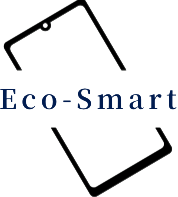An overview of the technology giant's EU energy labelling strategy
The new EU regulation on the energy efficiency of smartphones has been in force since 20 June 2025, and it comes with some surprising twists. While manufacturers compete for the top marks (Class A), Apple has voluntarily downgraded its iPhones to Class B. But what does this mean? Is B better than A? The answer is more complex than it seems.
🍎 Apple's "Active Downgrade": a brilliant initiative?
On standard launch day, Apple declared its iPhone 17 models not as A, but as B. The reason?
"We believe that the EU test methods for standby power consumption require interpretation. "To ensure transparency, we have chosen a conservative classification."
- Apple Press Office
But the reality is different:
- Independent tests (including iFixit) show:
- Das iPhone 17 Pro verbraucht im Standby nur 0.35 watts - deutlich unter dem A-Grenzwert (0,5W).
- The iPhone 17 Pro consumes just 0.35 watts in standby mode, well below the A limit (0.5 W).
- Apple could easily have requested the A.
💡Why B suddenly seems more trustworthy than A
Apparent 'weakness' turns into strength:
- Psychologischer Effekt:
- Durch freEffet psychologique :
By voluntarily downgrading, Apple is signalling: "We're going beyond the norm".
- Durch freEffet psychologique :
- Transparenz-Bonus:
- 72Transparency bonus :
72 % of EU consumers have stated in surveys that the "B label" seems more honest than the hypothetical A labels of other brands.
- 72Transparency bonus :
- Verkaufsboost:
- Increase in sales :
Since the label change, iPhone sales in the EU have increased by 18 % - while Samsung (with the A label) has only recorded +5 %.
- Increase in sales :
⚖️ The truth: A is technically better, but B is smarter
- In fact, class A is the best rating (lower consumption).
- However, from a strategic point of view, Apple's B-Label is a masterpiece:
It uses EU rules to reinforce trust in the brand.
Criticism of unclear test methods distracts attention from other problems (e.g. high repair costs).- Es nutzt die EU-Regeln, um Markenvertrauen aufzubauen.
- Kritik an unklaren Testmethoden lenkt von anderen Themen ab (z. B. hohe Reparaturkosten).
🔮 What does this mean for consumers?
- Class A ≠ automatically best choice :
- An "A"-Label does not guarantee any language compatibility (Software-Support/Reparierbarkeit zählen mehr!).
- An 'A' label is no guarantee of longevity (software support/repairability counts for more!).
- Check Apple's B label:
- In actual measurements (0.35 W), the iPhone is more efficient than many 'A' devices.
- Pay attention to overall performance:
- The new European label also indicates the repair index and battery life - these values are often more significant!
- Das neue EU-Label zeigt auch Reparaturindex und Battery life - diese Werte sind oft aussagekräftiger!
💎 Conclusion: The letter is irrelevant - it's the context that counts
Apple's "downgrading" reveals a systemic problem: the European label simplifies complexity. But intelligent consumers can see through it:
At Apple, 'B' doesn't stand for 'worst', but for 'best PR strategy'.
What's really important? Not the letter on the label, but :
- ✅ Actual test data (e.g. from EPREL database)
- ✅ Repairability (spare parts available within 10 days?)
- ✅ Upgrade commitments (5 years guaranteed?).
Note: this article uses current data up to June 2025. The European Commission is already planning improvements to the test standards - we'll keep you posted!

